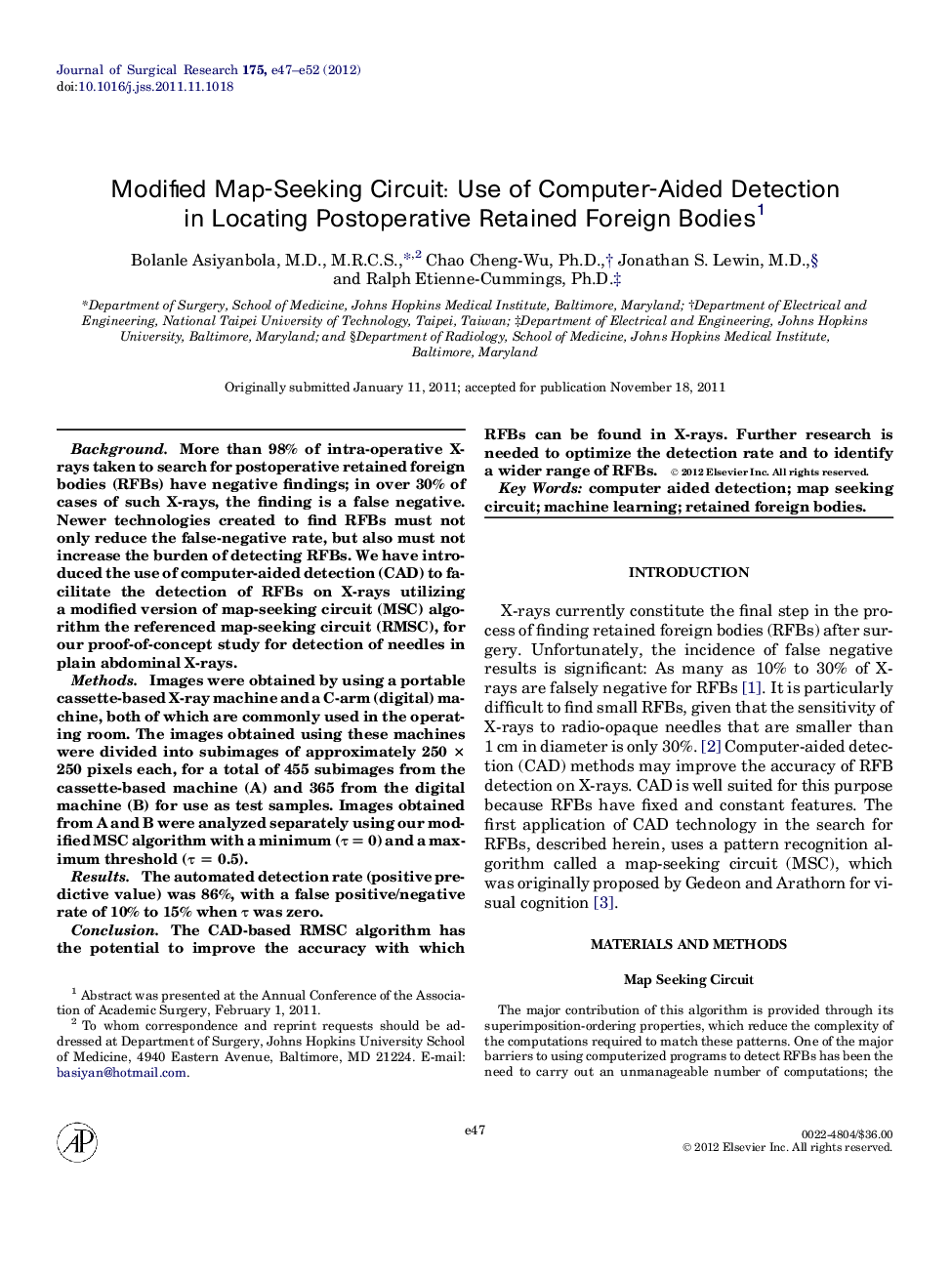| کد مقاله | کد نشریه | سال انتشار | مقاله انگلیسی | نسخه تمام متن |
|---|---|---|---|---|
| 4301441 | 1288438 | 2012 | 6 صفحه PDF | دانلود رایگان |

BackgroundMore than 98% of intra-operative X-rays taken to search for postoperative retained foreign bodies (RFBs) have negative findings; in over 30% of cases of such X-rays, the finding is a false negative. Newer technologies created to find RFBs must not only reduce the false-negative rate, but also must not increase the burden of detecting RFBs. We have introduced the use of computer-aided detection (CAD) to facilitate the detection of RFBs on X-rays utilizing a modified version of map-seeking circuit (MSC) algorithm the referenced map-seeking circuit (RMSC), for our proof-of-concept study for detection of needles in plain abdominal X-rays.MethodsImages were obtained by using a portable cassette-based X-ray machine and a C-arm (digital) machine, both of which are commonly used in the operating room. The images obtained using these machines were divided into subimages of approximately 250 × 250 pixels each, for a total of 455 subimages from the cassette-based machine (A) and 365 from the digital machine (B) for use as test samples. Images obtained from A and B were analyzed separately using our modified MSC algorithm with a minimum (τ = 0) and a maximum threshold (τ = 0.5).ResultsThe automated detection rate (positive predictive value) was 86%, with a false positive/negative rate of 10% to 15% when τ was zero.ConclusionThe CAD-based RMSC algorithm has the potential to improve the accuracy with which RFBs can be found in X-rays. Further research is needed to optimize the detection rate and to identify a wider range of RFBs.
Journal: Journal of Surgical Research - Volume 175, Issue 2, 15 June 2012, Pages e47–e52